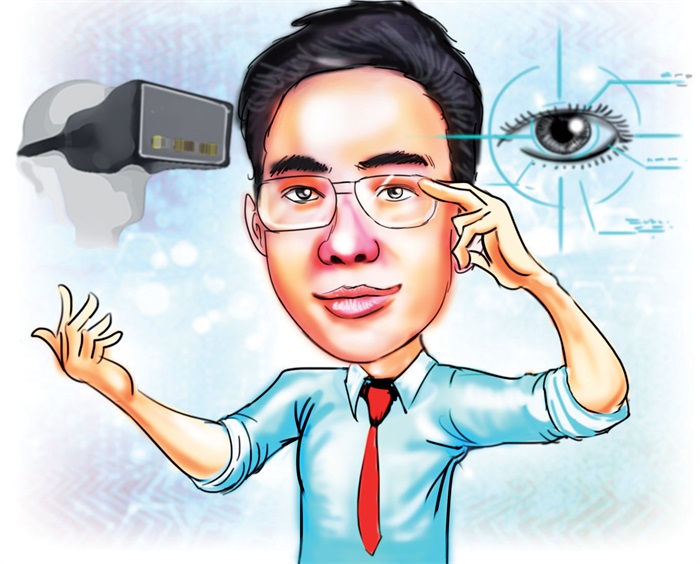The technology ball rolls on, through the eyes


There's a saying that the eyes are the windows of the soul. The visual sense is regarded as a unique communication channel among human beings, but Li Ming is dedicated to developing the sense into an interactive tool between people and machines.
"Like using the mouse to control the computer, we can also send a command by moving your eyeballs," explains the 31-year-old entrepreneur, who created startup VISM Information Technology Co in Shenzhen in 2016.
The technology of eye tracking, or eye control, is not new. It has been used to help the disabled to type and advertisers to understand more about customers' preference by capturing the focus of their sight when looking at a post.
What Li's interested in is its potential in much smaller screens — the augmented and virtual reality industry. His team of 12 technicians has developed their own hardware module, such as lens that could "see" where the user is looking, and an integrative software system, which would analyze and tell the screen to show content accordingly.
So far, most VR headsets available in the market are empowered by head movements. Comparing the two kinds of technologies, their accuracy rate is both lower than 1 degree and the delaying time is just dozens of milliseconds. But, Li believes eye tracking is of higher efficiency and more suitable for human behavior.
"The focus of our eyesight is about only 5 degrees while the VR screen is about 180 degrees. If we render the entire high-definition content of 180 degrees, it needs large calculating ability. But, in fact, by using the eye tracking technology, the headset could understand where the user is looking and then direct high-definition graphics processing power to that exact spot in real time," Li says.
In this way, users can enjoy higher definition displays, and the devices could become more efficient with longer battery life.
In addition, the entrepreneur believes, it's also more convenient for users to interact with the terminal by moving the eyeballs instead of heads.
The startup has applied its innovation to eye examination and myopia prevention in cooperation with domestic medical researchers and treatment companies.
The training industry is also a major commercial application sector. "When an electric meter maintenance training company approached us, I was quite surprised by the broad application of such technology," Li recalls.
He later found that some experienced workers usually finish the examination, quickly and precisely, based on intuition, but could not explain well the reason. The eye tracking technology could capture which part of the meter they look first and form a detailed training lesson for newcomers.
Neo Zheng, research manager at IDC China, agreed that the advantage of eye-tracking is to increase rendering efficiency, stressing it would only help level up the overall industry.
He pointed out the future trend is to combine eye and head tracking technology, although there're still just a few VR or AR manufacturers which adopt the eye-tracking technology at present.
Some industry pioneers, however, have already invested heavily in the technology. As early as 2012, Tobbi Tech — one of the earliest companies to develop eye-tracking technology — attracted the investment of Intel and released intelligent glasses. In 2016, Google bought another eye-tracking startup Eyefluence, while Facebook purchased the Eye Tribe at almost the same time.
According to the IDC report, shipments of AR and VR headsets worldwide, however, were down 30.5 percent year over year, totaling 1.2 million units in the first quarter of this year.
The report found the new opportunity lies in the commercial market, which is projected to grow from 24 percent of VR headset shipments this year to 44.6 percent by 2022. It sees the overall AR and VR headset market reaching 8.9 million units in 2018, up 6 percent over the previous year.
Zheng told China Daily the technique could be applied more widely in the medical treatment industry.
The global eye exam equipment market is forecast to hit $3.05 billion by 2022 from $2.29 billion in 2017, according to another research company Markets And Markets.
Contact the writer at grace@chinadailyhk.com
- Easier tax refunds for intl tourists in Shanghai
- Jianjiangyan irrigation system added to world heritage list
- World Laureates Association announces 2025 prize winners
- China Eastern Airlines launches regular flight between Nanchang and Macao
- Menagerie of floats to converge on Shanghai for tourism festival
- New aquatic product center opens for business in Guangzhou





































